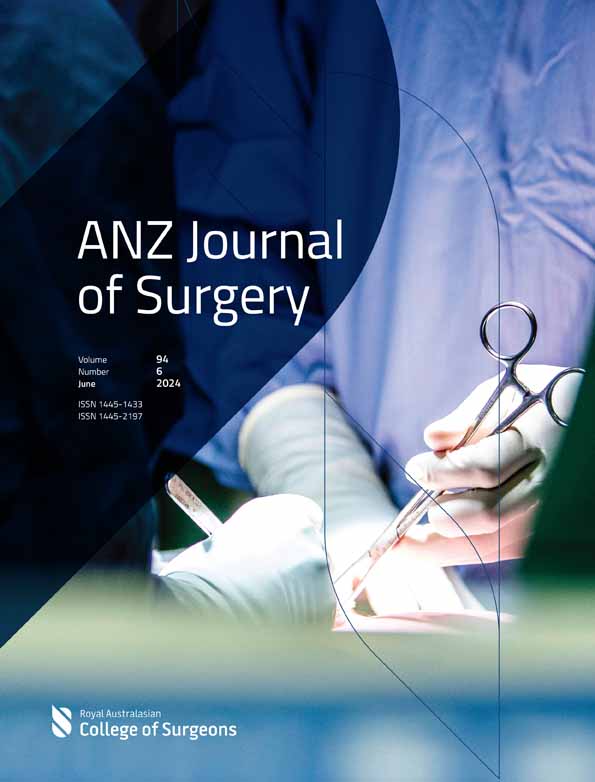Avoiding unnecessary sentinel lymph node biopsy with the use of superparamagnetic iron oxide mapping agents (Magtrace®) in breast surgery
Abstract
Background
Superparamagnetic iron oxide (SPIO) (Magtrace®) is a non-radioactive liquid tracer that can stay in the sentinel lymph nodes for 30 days. Injection of SPIO at time of primary breast surgery where upfront sentinel lymph node biopsy (SLNB) is not immediately indicated allows for a return to theatre if pathology then identifies invasive disease. SLNB is associated with paraesthesia, pain, seroma formation and lymphoedema risk. Hence, our study aims to assess the use of SPIO to avoid upfront SLNB in breast surgery for ductal carcinoma in situ (DCIS) and prophylaxis.
Methods
Retrospective single-centre study of consecutive patients who underwent injection of SPIO tracer at time of primary breast surgery to avoid upfront SLNB at Chris O'Brien Lifehouse, Sydney, NSW, Australia over a 10-month period.
Results
SPIO was injected 38 times, with 34 at time of mastectomy and four cases at time of wide local excision. The indication for surgery was DCIS in 18 cases, risk reduction in 17 cases and other indications in three patients. Six cases (15.8%) required delayed SLNB (D-SLNB) due to the finding of invasive disease on post-operative histopathology. All patients who underwent D-SLNB had nodes successfully localized with SPIO.
Conclusion
In our cohort, 84.2% of cases were able to avoid upfront SLNB, and hence avoid the associated complications of SLNB. SPIO injection was successful in localizing the SLN in all cases at time of surgery for D-SLNB. This technique was safe with few associated complications.
Conflicts of interest
None declared.




